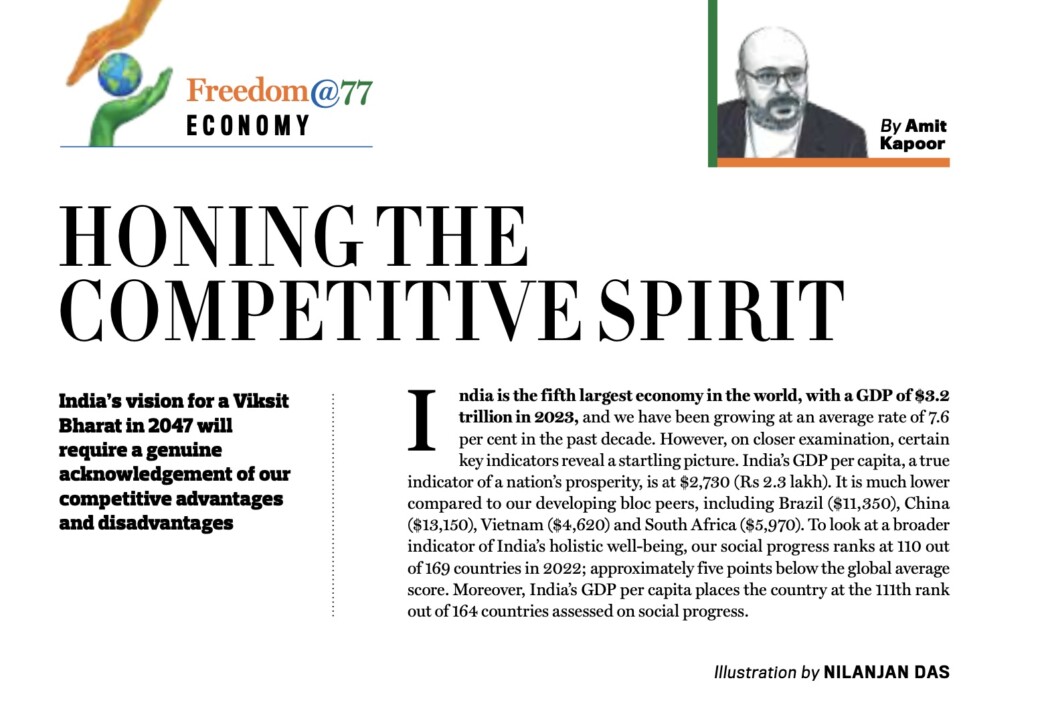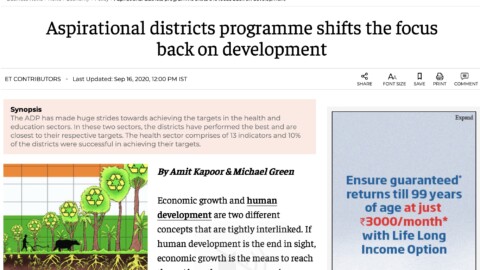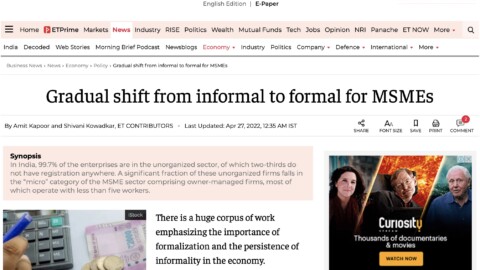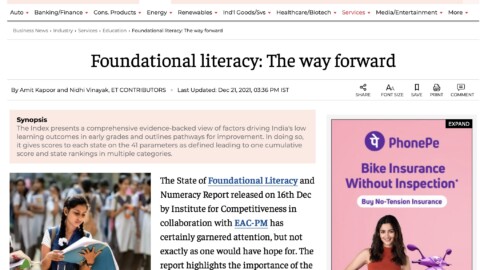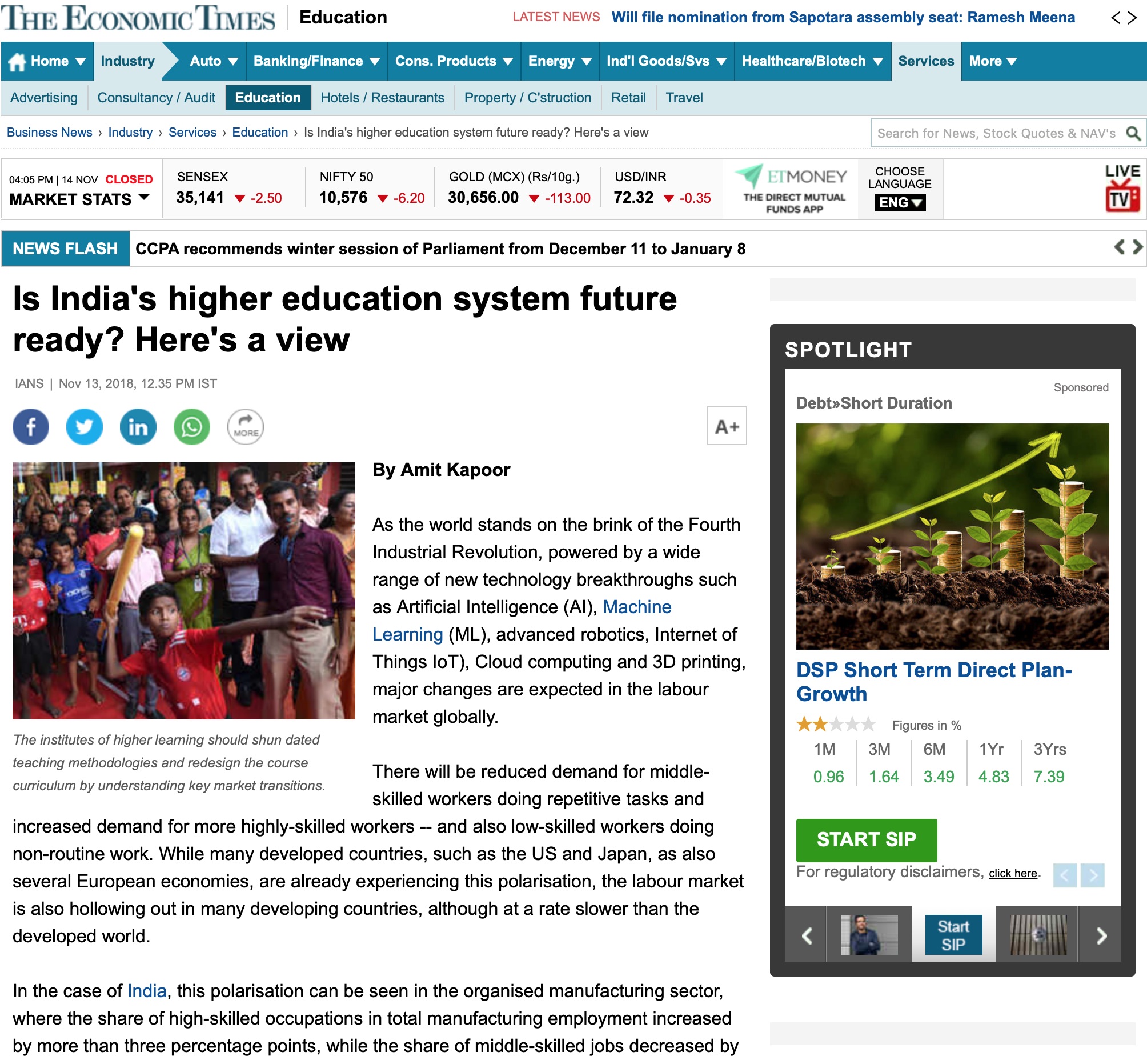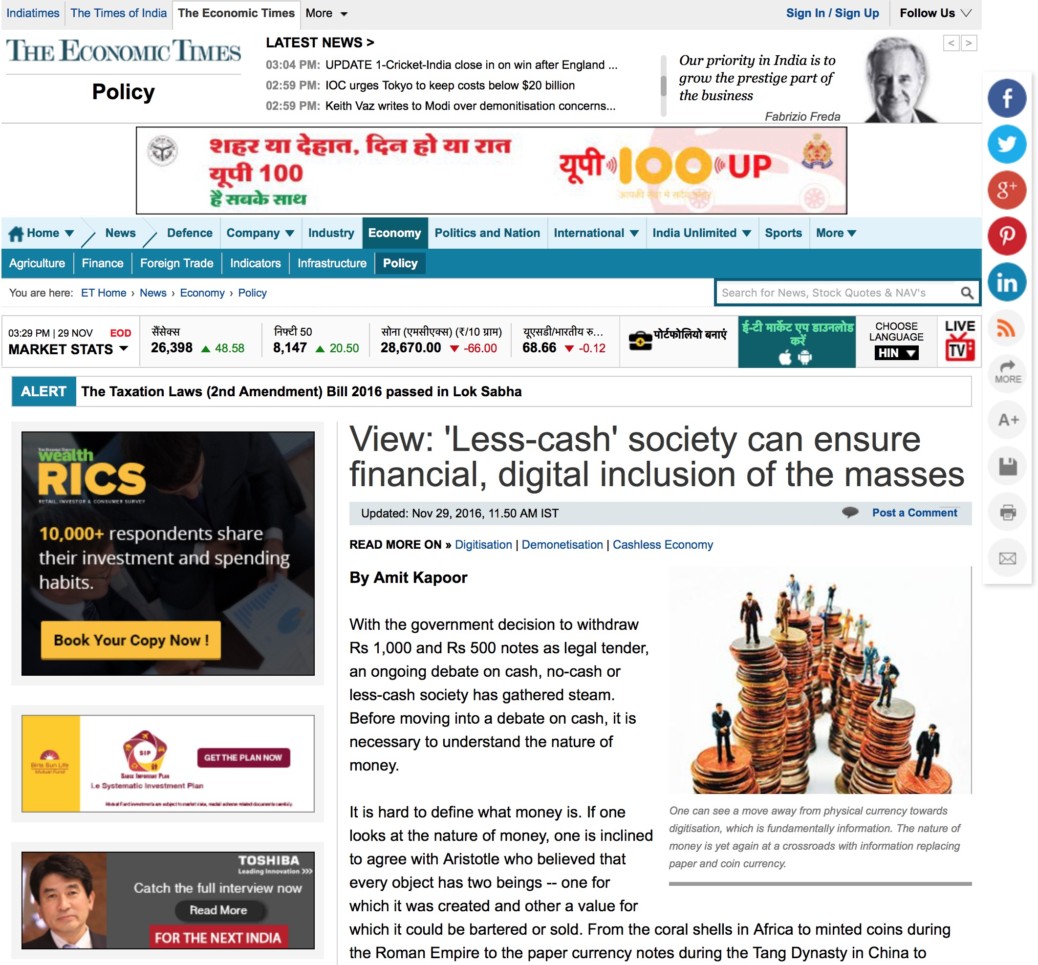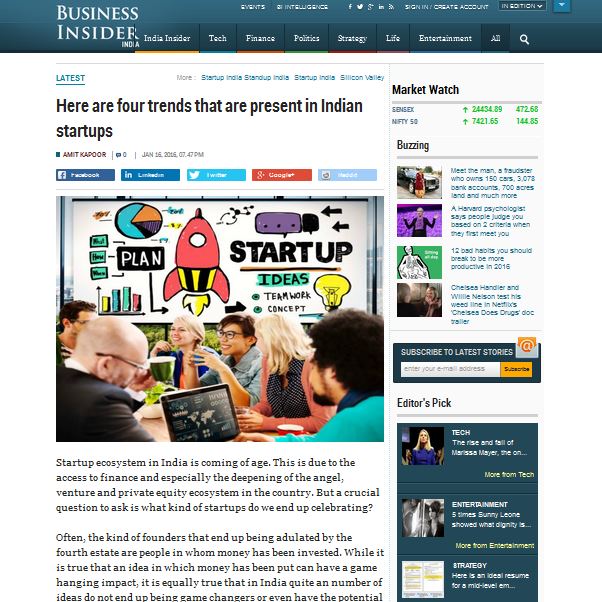India’s competitive landscape: Growth, gains and gaps
In a Global economic landscape brimming with uncertainties and opportunities alike, navigating the path to prosperous growth mirrors a game of chess. Each move carries the weight of potentially steering countries toward a decisive advantage or into unforeseen pitfalls. Given India’s vast and heterogeneous regional composition, fraught with varying levels of development, the imperative to carefully chart its course becomes even more pronounced. While studying the competitive advantage of nations, Professor Michael Porter famously wrote – National prosperity is created, not inherited. He stressed that a nation’s competitiveness depends on the capacity of its industry to innovate and upgrade. Consider how in the late 1990s, Morris Chang pioneered a ‘Gutenberg moment’ in technology with TSMC’s innovative foundry model. By enabling semiconductor companies worldwide to outsource manufacturing to Taiwan, leveraging its advanced technology and skilled workforce, Chang catapulted Taiwan as a Global leader in semiconductor production.
India’s ambitious goal of reaching a 5 trillion-dollar economy, calls for its’ own transformative ‘Gutenberg moment.’ How can India leverage its competitive strengths and address its challenges to achieve national prosperity? This remains the pivotal question.
Demographic tailwinds have propelled the rise of numerous Asian economies, sparking considerable optimism in India. Despite some squandering, there remains ample potential yet to be realized. With a median age of 28.2 years, India stands notably younger than both China (39 years) and Vietnam (31 years). The focused allocation towards skill development and employment in this year’s budget is particularly commendable, addressing the alarming decline in labour force participation from 70% in 1990 to 56% in recent years. India’s aspirations to cement its position as a global manufacturing hub also hinges significantly on its capacity to enhance workforce skills. Currently, the ‘middle-class’ is India’s fastest growing segment of the population. Hopes for a catalytic transformation are pinned to this class given their expansive purchasing power and capacity for discretionary spending. This demographic advantage positions India favourably to attract multinational giants, particularly in the fast-moving consumer goods (FMCG) sector, which seeks significant volume growth.
Innovation remains pivotal in securing enduring competitive advantages, and India has successfully carved out strategic niches in various industries. Our pharmaceutical industry for instance isn’t just fulfilling domestic needs—it is a global juggernaut. It commands over 20% of the global pharmaceutical supply chain and addresses approximately 60% of the world’s vaccine demand. While covering 40% of the US’s generic drug demand and supplying a quarter of the UK’s medications, India also hosts the most USFDA approved manufacturing plants outside the US. The industry’s success is underpinned by cost competitiveness driven by factors such as lower labor costs, economies of scale, and efficient manufacturing processes. Furthermore, synergizing the pharmaceutical sector with India’s burgeoning biotechnology industry presents promising avenues for advancing innovation and bolstering contributions to global health initiatives.
Our remarkable strides in digital public infrastructure also laid a robust foundation for data-centric governance practices. Compared to other Asian countries, India’s UPI achieved remarkable scale and adoption due to its open and inclusive architecture, which encourages innovation from both large financial institutions and startups. The success of UPI in driving financial inclusion is well documented. Between 2014 and 2019, India’s core digital economy grew at 2.4 times the overall economic growth. During the pandemic, the CoWin portal enabled the immunization of nearly 90% of the country’s population. The budget’s pitch for an Agri Stack DPI further indicates the commendable replicability and scalability of India’s DPI across sectors.
While India possesses the tools to amplify prosperity, effectively harnessing them remains a formidable challenge. Indian policies often fall short in fostering competitiveness by failing to forge timely critical links and neglecting essential innovations and upgrades. Take, for instance, India’s agricultural exports—a sector employing roughly 55% of our workforce and serving as the backbone of our economy. In 2022, we proudly claimed a 7.79% slice of the global food grains market, powered by a robust harvest of 330.5 million metric tonnes. Yet due to the lack of a concerted export policy, Indian farmer’s income did not register a proportionate growth. Nor have we addressed the need to diversify and climate-proof the export basket, to move away from production-centric to farmer-centric policies. GVC integration is another opportunity we haven’t fully capitalised. Through the 1990s and 2000s, India’s GVC participation rose steadily and peaked at 47.6% just before the financial crisis in 2008 but given the size of our economy, India trails significantly behind other key Asian economies like China, Malaysia, and South Korea.
In today’s rapidly evolving world, characterized by emerging technologies and dynamic shifts, creative destruction is as crucial as addressing deficiencies. Just as the cracked pot in the gardener’s tale inadvertently watered flowers along its path, India can not only harness its competitive advantages but also transform perceived disadvantages into strengths by creatively leveraging them. This however calls for plugging knowledge gaps and embracing data driven strategies to spur competitiveness thereby putting India on a sustainable growth trajectory.
The article was published with August issue of India Today. It was part of the series of “Independence Day” Special and included contributions in the area of economy, pharmaceutical, infrastructure, education, health, technology et al.
